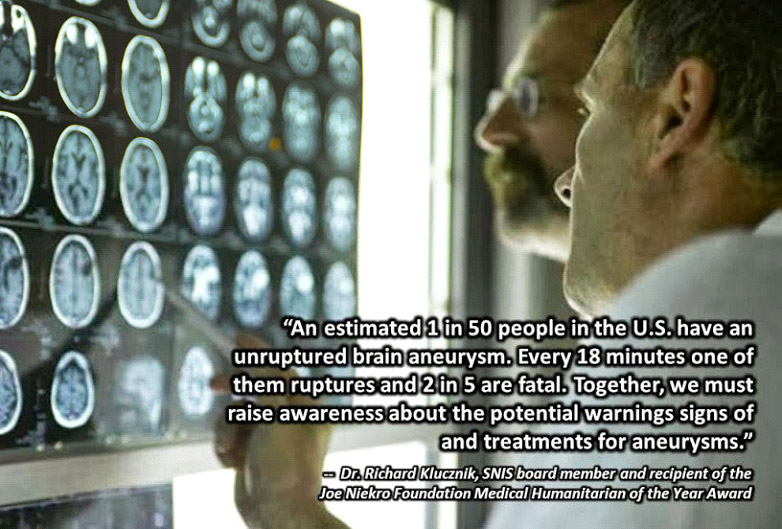- Brain Basics
- What is an Aneurysm?
- What is an AVM?
- What is a Hemorrhagic Stroke?
- Types of Cerebral Aneurysms
- Factors of a Brain Aneurysm
- Symptoms of a Brain Aneurysm
- Dangers of a Brain Aneurysm
- How Does a Brain Aneurysm Develop?
- What Happens When an Aneurysm Bleeds?
- How is a Brain Aneurysm Diagnosed?
What is an Aneurysm?

A cerebral aneurysm (also known as an intracranial or intracerebral aneurysm) is an abnormal, weak spot on a blood vessel wall that causes an outward bulging, likened to a bubble. The bulging aneurysm can put pressure on a nerve or surrounding brain tissue. It may also leak or rupture, spilling blood into the surrounding tissue (called a hemorrhage). Some cerebral aneurysms, particularly those that are very small, do not bleed or cause other problems. Cerebral aneurysms can occur anywhere in the brain, but most are located along a loop of arteries that run between the underside of the brain and the base of the skull, known as the Circle of Willis.
These weak spots can involve all walls of the blood vessel (a fusiform aneurysm), form a bulge on just one wall (saccular) or separate the vessel walls (dissecting). An aneurysm can affect any vessel in the body but only those in the head can cause a hemorrhagic stroke, a serious medical condition which when ruptured can lead to brain damage and death.
Aneurysms are an uncommon disorder of the blood vessels that affects approximately six percent of the United States population. In total, approximately 30,000 aneurysm ruptures (known as intracranial hemorrhages) occur each year. On average, aneurysms are more common in females than in males, and 20 percent of patients suffer multiple (two or more) aneurysms. The average age of individuals affected by aneurysms is 40-60 years old, and the most significant risk factors are cigarette smoking and family history of aneurysms.

- It is estimated that 6.7 million people in the US have a brain aneurysm
- As many as 1 in 50 people will develop a brain aneurysm
- Every 18 minutes an aneurysm ruptures
- Burst brain aneurysms are fatal in about 40% of cases.
- 10-15% of patients diagnosed with a brain aneurysm will harbor more than one aneurysm
- 66% of people who recover from a ruptured brain aneurysm will suffer neurological deficits.
- Brain aneurysms are most prevalent in people ages 35-60, but can occur at any age
- Women, more than men, suffer from brain aneurysms at a ratio of 3:2
- African-Americans and Hispanics are about twice as likely to have a brain aneurysm rupture compared to whites
Common Questions
Upcoming Events
News Room
Connect with Us
- Subscribe to our Knuckle-Up Newsletter
- Become a Fan on Facebook
- Follow us on Twitter
- Follow us on Instagram
- Join our Online Aneurysm/AVM Support Group
- Join our Online Parents Support Group
- Join our Online Young Adult Survivor’s Support Group
- Join our Online Aneurysm/AVM Caregivers Support Group
- Join our Online Honoring the Taken Support Group
- Support Group Locations
